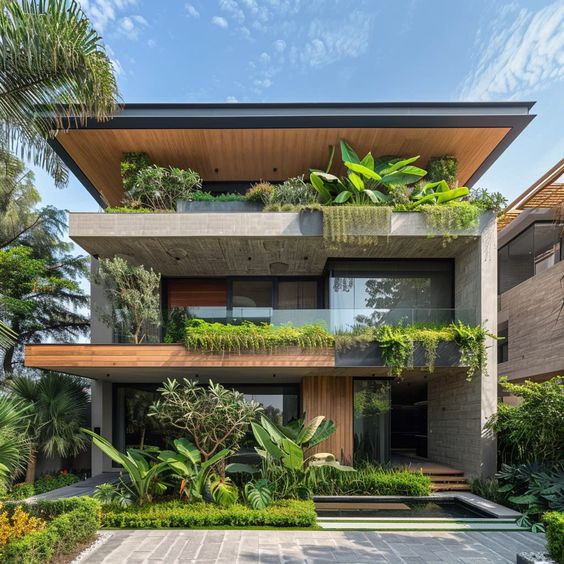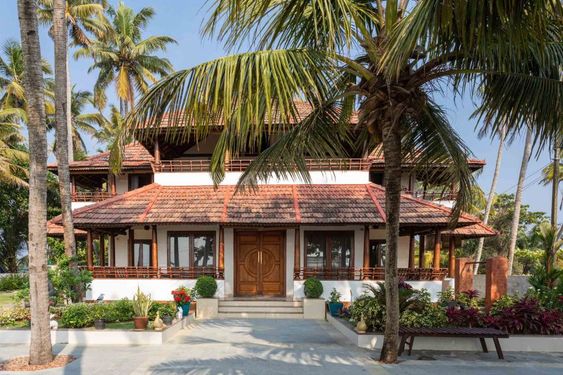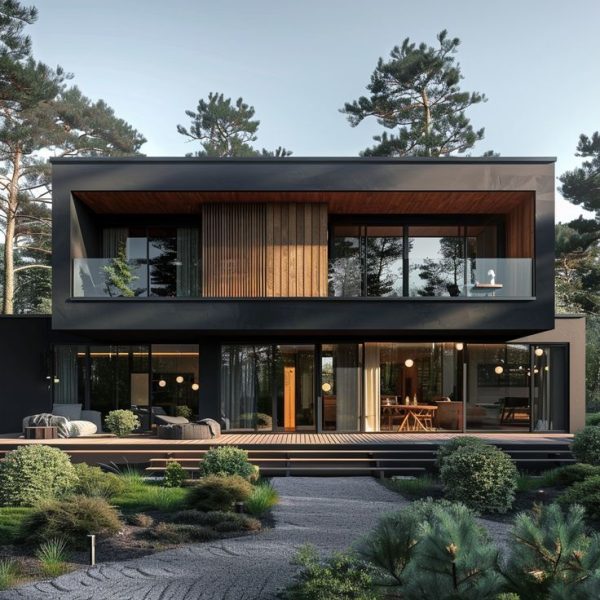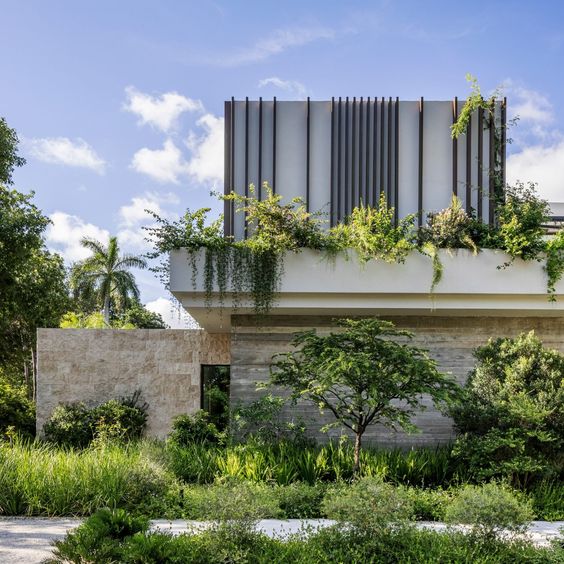Contemporary Architecture
Contemporary architecture in India blends modern design principles with traditional elements, reflecting the country’s cultural diversity and rapid urbanization. Characterized by sustainable practices, innovative materials, and cutting-edge technologies, it emphasizes functionality and aesthetics while addressing environmental concerns. It often integrate local craftsmanship, indigenous materials, and vernacular styles into sleek, modern forms.

Kerala Style Architecture
Kerala’s regional architecture is shaped by its tropical climate and traditions. Key features include sloping, tiled roofs to withstand monsoons, elevated wooden structures to prevent flooding, open verandas, and courtyards. Natural materials like laterite stone, wood, and clay tiles are commonly used, along with intricate wood carvings on doors and windows.

Modernist Architecture
Modernist architecture, emerging in the early 20th century, prioritizes simplicity, function, and minimalism. Key features include clean lines, geometric shapes, open floor plans, and large windows for natural light. Modern materials like steel, concrete, and glass are used, with flat or low-pitched roofs and minimal ornamentation.

Brutalist Architecture
Brutalist architecture, popular from the 1950s to 1970s, is characterized by its raw concrete (béton brut) construction, massive, monolithic forms, and expression of structure and function. Key elements include rough, textured surfaces, minimal ornamentation, small recessed windows, and a utilitarian, communal design that emphasizes bold, fortress-like aesthetics.
